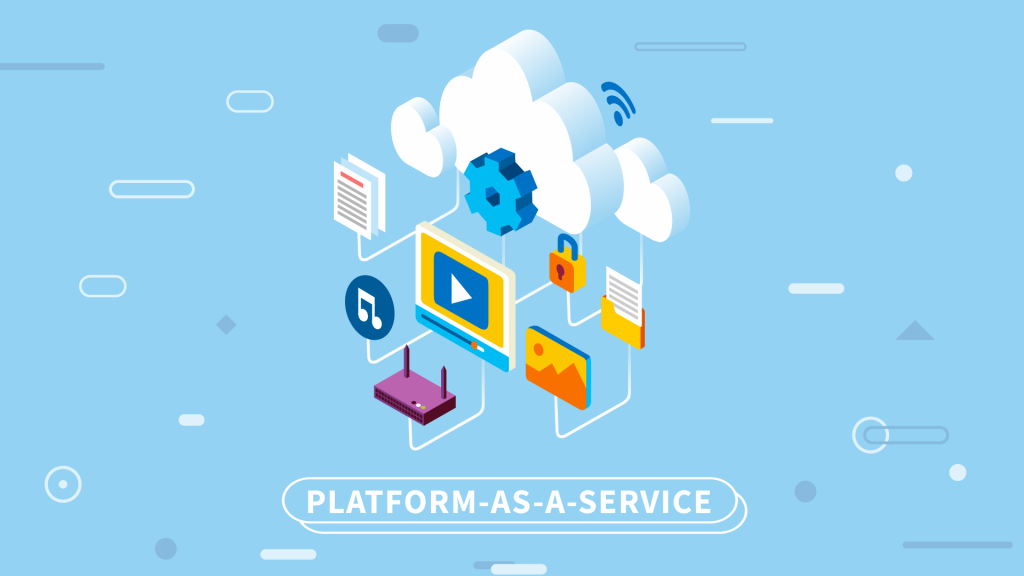Top 7 Uses of Cloud Computing for Businesses
Cloud Computing For Businesses
Cloud Computing isn’t the newest, flashiest trend in tech right now, but as the service evolves and grows in popularity, so do its use cases and benefits. Whether your business is looking to utilize the service within your organization, or leverage it within a sales strategy, there is something in this list for you. If some of these terms are unfamiliar to you, consider checking out the previous blog in this series, “What is Cloud Computing and how can it help?”.
Now, without further ado, here are 7 of the top uses of Cloud Computing for businesses.
-
Infrastructure as a Service (IaaS):
IaaS delivers computational, networking, and storage resources to consumers on-demand, usually utilizing a pay-as-you-go service. With cloud computing, you can offer your clients the use of your infrastructure to host their cloud services. Another option is to sell third-party infrastructure for creating websites to promote clients’ products and services. -
Platform as a Service (PaaS):
Alternatively, you can offer your platform to clients through cloud computing. PaaS provides a more complete platform, offering hardware, software, and infrastructure. Most online platforms run on cloud computing today, because they are available to anyone with a connection. Companies are rapidly moving to the cloud to eliminate the need for computer hardware in their own offices decreasing their IT and development costs.

-
File Storage:
One of the most obvious uses of the cloud is its ability of storing large quantities of your files, and accessing, storing, and retrieving them from any web-enabled interface. The web services interfaces are usually simple. At any time and place, you have high availability, speed, scalability, and security for your environment. In this scenario, organizations are only paying for the amount of cloud storage they are actually consuming, and do so without the worries of overseeing the daily maintenance of the storage infrastructure. There is also the possibility to store the data either on- or off-premises depending on the regulatory compliance requirements. Data is stored in virtualized pools of storage hosted by a third party based on the customer specification requirements. -
Hybrid Cloud & Multi Cloud:
Hybrid cloud is a computing environment that connects a company’s on-premises private cloud services and third-party public cloud into a single, flexible infrastructure for running the organization’s applications and workloads. This unique mix of public and private cloud resources provides an organization the luxury of selecting the optimal service for each application or workload and moving workloads freely between the two clouds as circumstances change. Technical and business objectives are fulfilled more effectively and cost-efficiently than could be with public or private cloud alone. Multi-cloud takes things a step further and allows you to use two or more clouds from different cloud providers. This can be any mix of Infrastructure, Platform, or Software as a Service (IaaS, PaaS, or SaaS). With multi-cloud, you can decide which workload is best suited to which cloud based on your unique requirements, and you are also able to avoid vendor lock-in.
-
File Recovery & Backups:
Data backup is another common use of cloud computing. While you can backup to your computer or a drive, either of these can be physically damaged in a storm, flood or fire. The cloud offers you a place to backup data that is away from your location and will keep data safe in a secure environment. If needed, you can also share these backup files to other members of your team. Yet another benefit derived from using cloud is the cost-effectiveness of a disaster recovery (DR) solution that provides for faster recovery from a mesh of different physical locations at a much lower cost that the traditional DR site with fixed assets, rigid procedures and a much higher cost. -
Tools for Collaboration:
Collaboration within your company and with other companies has become easier than ever in 2022. Cloud computing makes collaboration easy no matter where you and your collaborators are physically located because you can all access the project files on a shared cloud space. This type of collaboration can be made private until you are ready to bring your finished work to public attention. Even if you are working from home with other people from your company, the cloud offers more opportunities to work 24/7 with your partners without any restrictions based on available resources. -
Big Data Analytics:
One of the aspects offered by leveraging cloud computing is the ability to use big data analytics to tap into vast quantities of both structured and unstructured data to harness the benefit of extracting business value. This data can help land leads, guide new transactions, and shift marketing strategies. Retailers and suppliers are now extracting information derived from consumers’ buying patterns to target their advertising and marketing campaigns to a particular segment of the population. Social networking platforms are now providing the basis for analytics on behavioural patterns that organizations are using to derive meaningful information.
To Conclude
Cloud computing is widely accessible, and more and more affordable for businesses of any shape and size. Whether you are using it, or selling it, we hope this short list was a helpful read for you and your business. If you are interested in implementing cloud services into your workflow, we are always open to chat. You can read more about how we can help here, or even check out some of our similar services. If this was helpful at all, consider checking out some of our other blogs as well, covering all things tech.
Thanks for reading, and we hope 2022 treats you well.